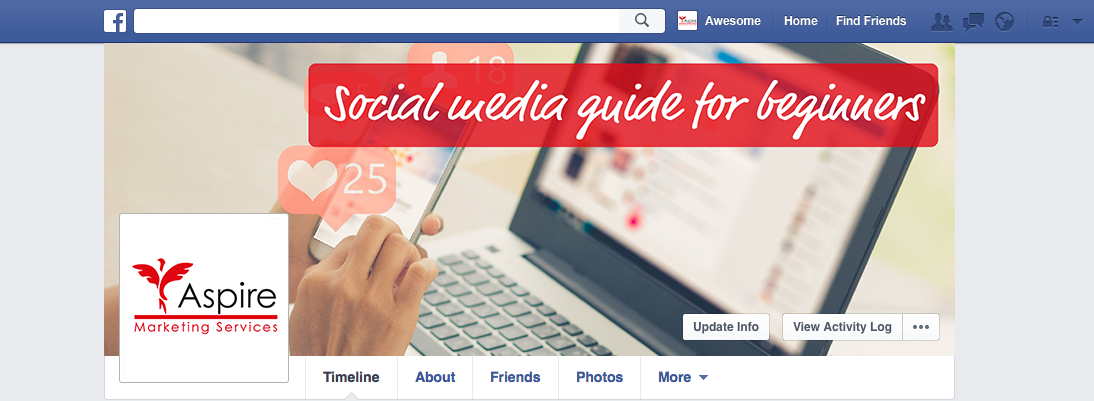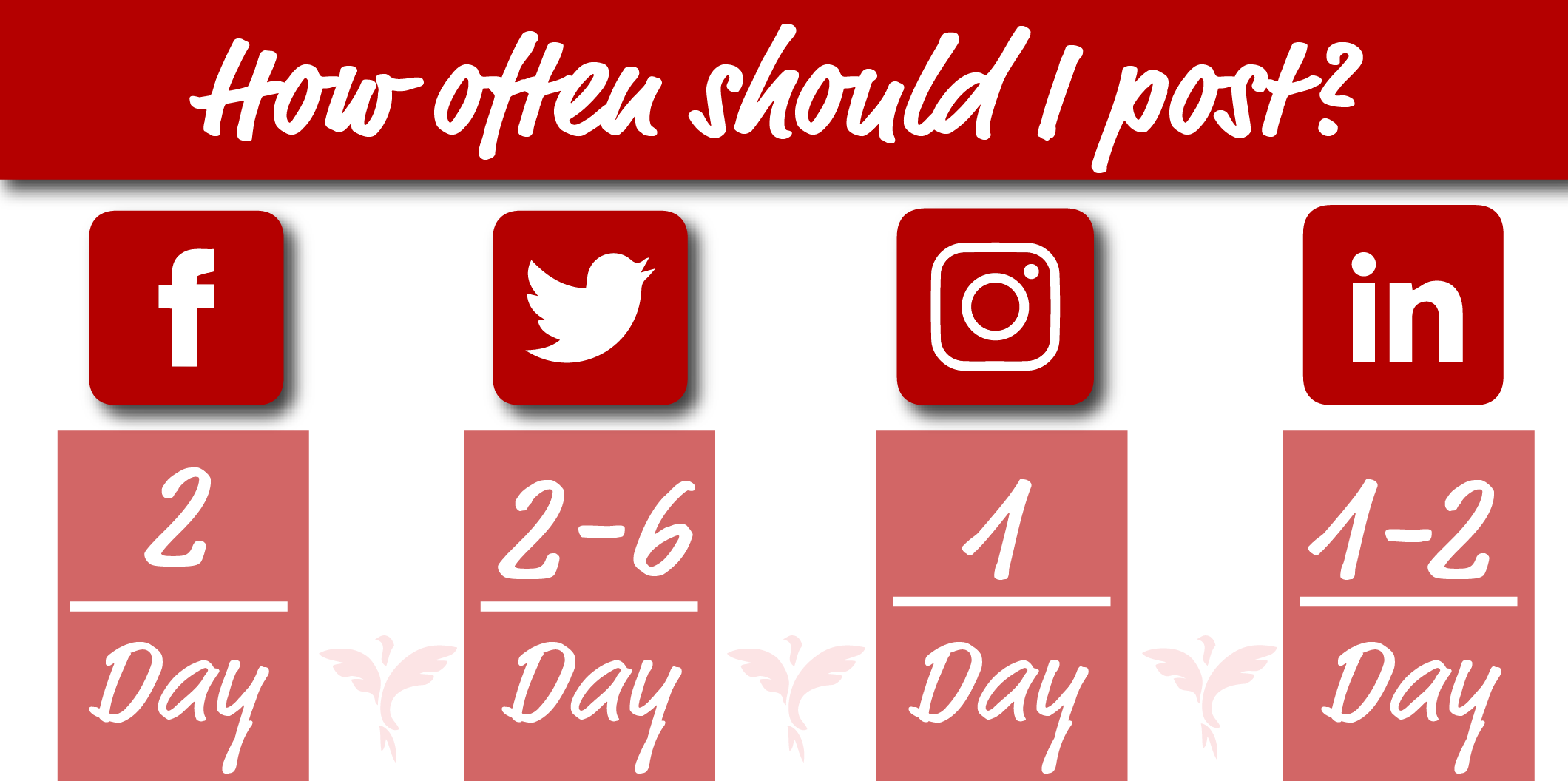A beginner’s guide to social media for business owners
26 February 2019
26 February 2019

Andrew Shaw, Business Development Assistant at Aspire Business Partnership guides business owners to social media strategy success.
I often have conversations with people that are attempting to use social media for their business but haven’t managed to get to grips with the platform interfaces, don’t quite understand which channels are right for their business and are unaware of the real purpose of social media channels.
The majority of business owners I speak to do not fully understand the world of social media and therefore have never used the platforms to their fullest potential. In this blog, I will address the most common social media challenges and hopefully give you an insight into how social media can be used to benefit your business. I will cover the top four business social media channels: Facebook, Instagram, Twitter and LinkedIn.
Without going into too much technical detail and assuming you have seen a social media page before, most social media interfaces are fairly similar. They often have some kind of post ‘feed’ that displays posts from the different people you follow, people you are ‘friends’ with or are part of your digital network. Most feeds are in chronological order (I won’t confuse you by saying that sometimes this isn’t the case just yet!).
Using a social media platform is seemingly easy, you just log in, write a post, perhaps upload an image and voila, you have created your first post. But believe me, just knowing how to post isn’t enough to build a social media presence for your business. As we all know, it takes hard work and dedication to achieve anything worthwhile and social media is no different. It is only with consistent, thought-out and engaging content that you will see results from your social media output.
Different types of social media can be used to accomplish different goals and dependant on your business, certain platforms will be more successful for you.
Facebook is the largest social media platform in the world. Its sprawling network is a vast sea of marketing opportunity. The platform is a community-based social media site that heavily encourages engagement, content and instant messaging.
Almost any business can benefit from having a Facebook presence, however, it is especially important for companies that communicate directly with their customers. Facebook offers a simple instant messaging tool that gives your audience the opportunity to contact you in a more relaxed environment than your website’s contact page. Let’s be honest, nobody wants to send a support email only to receive a (possibly automated) response up to 48 hours later.
Make sure your business is using this platform to share the content you create, communicate with your audience and also advertise the products and services you provide. Increasingly, social media success is becoming less ‘organic’ and more paid. If you want to survive in the social media sphere, make sure you’re willing to invest in it, whether that be time, money or both.
LinkedIn is a social media platform for professionals. It is used for advertising, job searches and business networking. LinkedIn is still considered a form of social media; however, it is usually used in a more professional sense. Companies create pages on LinkedIn to raise company profile and to engage their audience in conversation about the business world and the industry they are involved in.
LinkedIn is an excellent place to share company news, blogs and events with your company’s audience and also to find potential candidates for job roles within your company. A personal profile is a powerful tool. If you want to be seen as a thought leader in your industry, it is a good idea to be posting from your own profile as well as a company profile to build communication and trust with clients.
Twitter is great for engaging with your target audience. This social network isn’t designed for people to just distribute and consume content, it is instead to interact. Using hashtags and joining in with trends and conversations are an excellent way to improve social growth and create positive customer interaction. Twitter is also a good platform to track. You can use the inbuilt analytics platform to see how many people are viewing your posts and content. This means that it is easy to set yourself achievable goals and are able to track your progress.
Twitter should be used by anyone looking to build a social media presence and can grow your business tremendously. Using hashtags that localise your tweets can target an audience that you desire and therefore, create an impact in areas and industries that you desire.
Instagram is a visual platform, excellent for B2C and B2B companies that want to display their products, business life and content to their audience. Brands that are successful on Instagram not only post attractive images but they also create a well-defined brand identity involving visual creativity and effective community engagement and management.
As with all social media platforms, it is necessary to set clear objectives that drive the strategy behind the social media channel. This might be a direct goal of improving sales, however, as your audience is unlikely to respond well to a large amount of advertisement, the clever use of product placement and influencer marketing could develop a successful Instagram strategy.
Once you’ve decided on which platform to use (we would suggest starting with 1-2) the best way to build an audience is by spreading the word that you have social media channels. Adding social media icons to your website is a good way to show that you are active on social media. Clients and customers that already visit your website may be interested in following your social channels and this is a great way to let them find you.
You should also add your social media icons to your printed marketing collateral such as flyers, business cards and brochures to build awareness. If you are creating email campaigns, ensure that the social media icons are visible and clickable and also send an email announcement to your contacts. Adding clickable social media icons to your business email signature might also be a good idea to gain a following!
Well, there is no definitive answer to this question. In reality, it all depends on how much time you want to put into developing your social media presence. I will give you a general rule of thumb, however, you will never know what works best for you until you try it out for yourself.

If you choose to use these social media platforms, start by introducing yourself. Make sure your branding is consistent with your other marketing collateral and make sure your target audience is always in mind when writing and creating posts.
Without the experience of posting on social media for business, it is difficult to learn from scratch. My suggestion for getting started is to just try it out. Post, share, like and comment… all of this experience will improve your skills and will improve your social presence.
It is also a good starting point to search for your competitors on social media. See what kind of content they produce and develop a strategy that represents your business. Focus on what makes your business different and integrate this into your strategy. There’s no time like the present. Don’t put off creating your social media channels and get started today.
